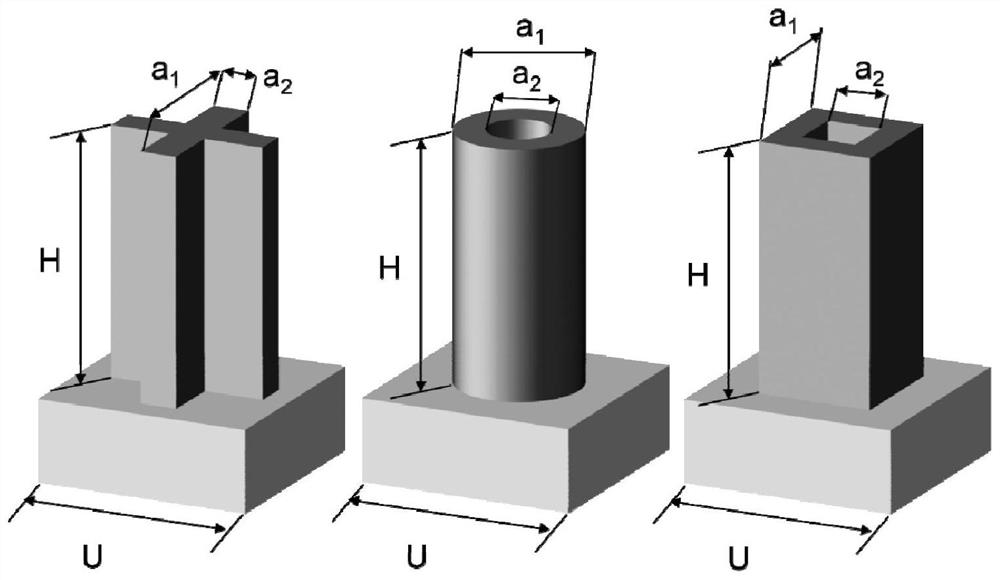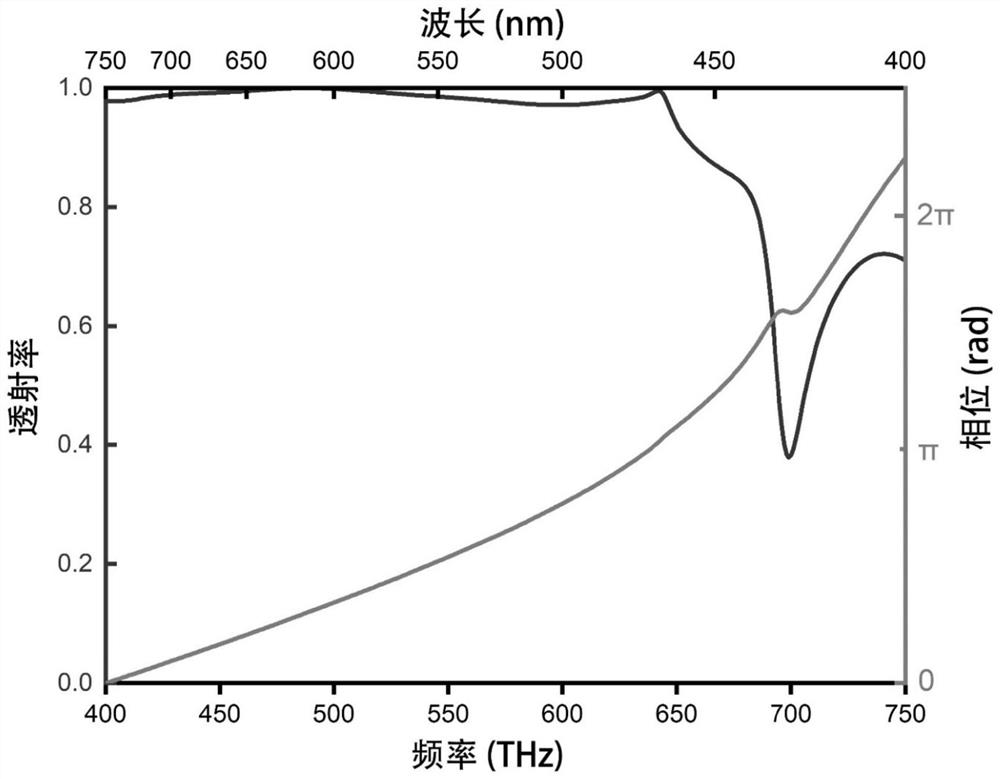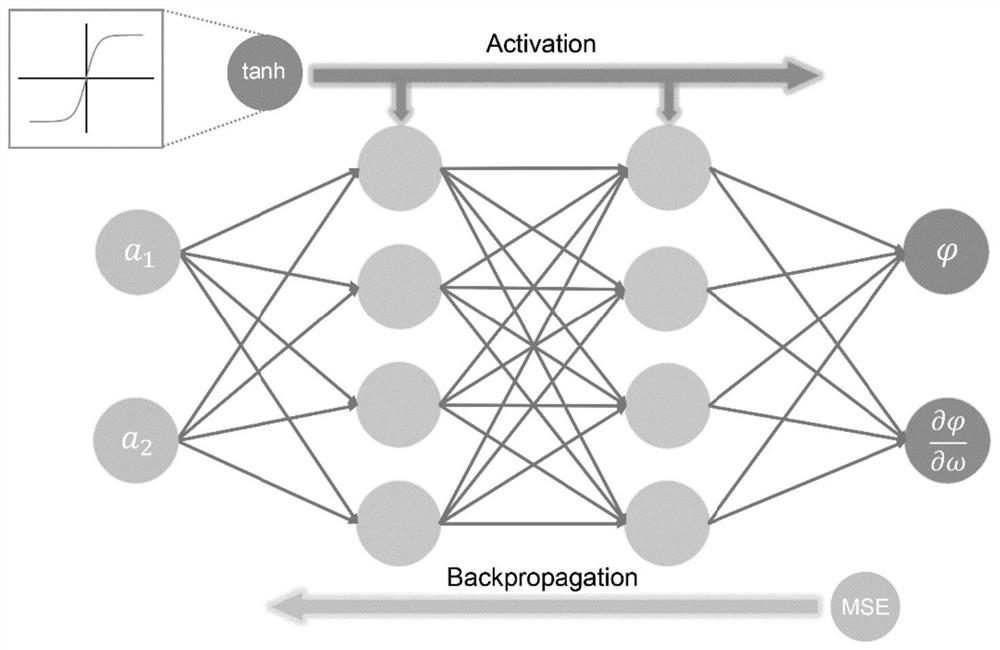Machine learning method, system and equipment for metasurface lens design and medium
A lens design and machine learning technology, applied in the field of nanophotonics, can solve the problems of large computing resource consumption, large resource consumption, and long design cycle, etc., to reduce time and hardware resource costs, strong universal applicability, and short design cycle Effect
- Summary
- Abstract
- Description
- Claims
- Application Information
AI Technical Summary
Problems solved by technology
Method used
Image
Examples
Embodiment 1
[0045]Embodiment 1: This embodiment completes the establishment of a large-scale performance database for the functional primitives constituting the metasurface lens through machine learning and the optimization of the functional primitives to complete the design of the metasurface lens, including:
[0046] S1. The establishment of the database based on the training of the neural network: by constructing and training the neural network, the basic properties of the functional primitives (including geometric features and materials) and the optical effects (including the output phase, group delay, etc.), and finally establish a performance database of large-scale functional primitives. The implementation process includes:
[0047] S11. Delineate the scope of the functional primitives according to the requirements and the basic attributes of the functional primitives.
[0048] Specifically, the basic properties of functional primitives include but are not limited to size, symmetry...
Embodiment 2
[0082] Embodiment 2: The above Embodiment 1 provides a machine learning method for designing a metasurface lens, and correspondingly, this embodiment provides a machine learning system for designing a metasurface lens. The system provided in this embodiment may implement the machine learning method for metasurface lens design in Embodiment 1, and the system may be implemented by software, hardware, or a combination of software and hardware. For the convenience of description, when describing this embodiment, the functions are divided into various units and described respectively. Of course, during implementation, the functions of each unit may be implemented in one or more software and / or hardware. For example, the system may include integrated or separate functional modules or functional units to perform corresponding steps in each method of the first embodiment. Since the system of this embodiment is basically similar to the method embodiment, the description process of thi...
Embodiment 3
[0086] Embodiment 3: This embodiment provides an electronic device corresponding to the machine learning method for metasurface lens design provided in Embodiment 1. The electronic device may be an electronic device used for a client, such as a mobile phone, a A tablet computer, a desktop computer, etc., to execute the method of the first embodiment.
[0087] like Image 6 As shown, the electronic device includes a processor, a memory, a communication interface and a bus, and the processor, the memory and the communication interface are connected through the bus to complete mutual communication. The bus may be an Industry Standard Architecture (ISA, Industry Standard Architecture) bus, a Peripheral Component Interconnect (PCI, Peripheral Component) bus or an Extended Industry Standard Architecture (EISA, Extended Industry Standard Component) bus and the like. A computer program that can be run on the processor is stored in the memory, and the processor executes the machine le...
PUM
 Login to View More
Login to View More Abstract
Description
Claims
Application Information
 Login to View More
Login to View More - Generate Ideas
- Intellectual Property
- Life Sciences
- Materials
- Tech Scout
- Unparalleled Data Quality
- Higher Quality Content
- 60% Fewer Hallucinations
Browse by: Latest US Patents, China's latest patents, Technical Efficacy Thesaurus, Application Domain, Technology Topic, Popular Technical Reports.
© 2025 PatSnap. All rights reserved.Legal|Privacy policy|Modern Slavery Act Transparency Statement|Sitemap|About US| Contact US: help@patsnap.com



